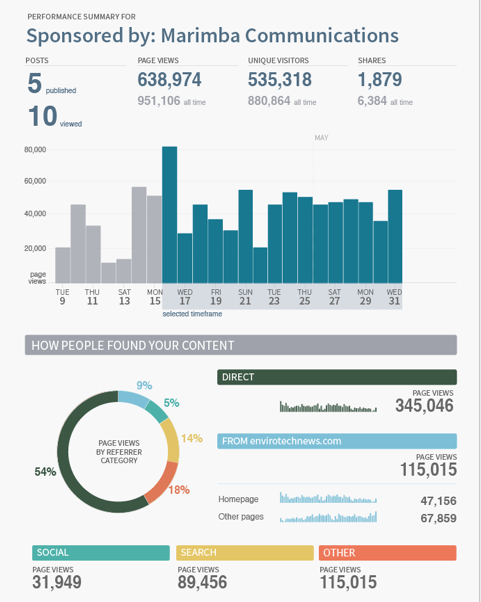Proving Native Advertising Works, In Three Easy Steps
For marketers and publishers alike, native advertising can still feel a little like the wild west. Everyone is figuring it out while trying to stay ahead of the competition. The only thing that is clear? Advertisers are making more and more room in their budgets for sponsored content as the field takes off.
Figuring out clear “sponsored” language and telling a brand’s story in a way audiences care about is only half the battle. Publishers also have to prove value after the fact. And the very feature that attracts advertisers to sponsored content — the ability to communicate a story, educate consumers, or create thought-leadership — are the same features that make ROI harder to show in post-campaign reports.
Sending an impressions and click-through-rate summary at the end of a campaign isn’t going to cut it with native advertising.
We wanted to share three tips on how publishers using Parse.ly can set up sponsored content to make post-campaign reporting easier for you, and better for your advertisers.
Setup. Keep it simple, silly.
It’s easy to overthink projects when there is technology involved. Surely, if you want to create a full content studio, then you’ll need a new page layout, maybe a different CMS that’s only for sponsored content, and and a whole new analytics team, right?
Stop right there. Work with what you have already! We recommend making use of one of the most underutilized features of your existing CMS: tags. Since you can see analytics for any tags in the Parse.ly dashboard, simply using the tag “sponsored” and the brand name, i.e. “microsoft-sponsored,” means you have your analytics all set up already. As long as you can access tags, you can access your sponsored content data in your dashboard.
Share. The quickest way to appease clients.
Constantly getting emails from clients asking how their campaign is doing? While keeping clients happy is a top priority, pulling data over and over again to send them gets old quick.
Give clients access to their campaign with one click with the “Share” button. They’ll be able to see readers in real-time, which is crucial for taking immediate actions, like engaging on social media or in the comments, and historical, which gives the big picture over the course of a campaign. Whether you’re being asking for a brief recap or a longer-term comparisons across multiple campaigns, you get to make a client happy without spending any time in Powerpoint.

Show off. Make sure you’re capturing the breadth of the readers.
Brands invest in native advertising to appeal to a wider audience – yours! The more information you can give them about those readers, the more they’ll understand why it’s so important to work with you. Show them which social networks sent readers, and how much of an increase or “lift” that created over what the article would have normally seen. This can be done at an article or campaign level, if you’re using Parse.ly reports.
In addition to showing off your audience, this information can help the brands understand their own target market better. Be more than a distribution platform for advertisers; become a partner that can help them understand how to craft a strategy that works in the long term.
